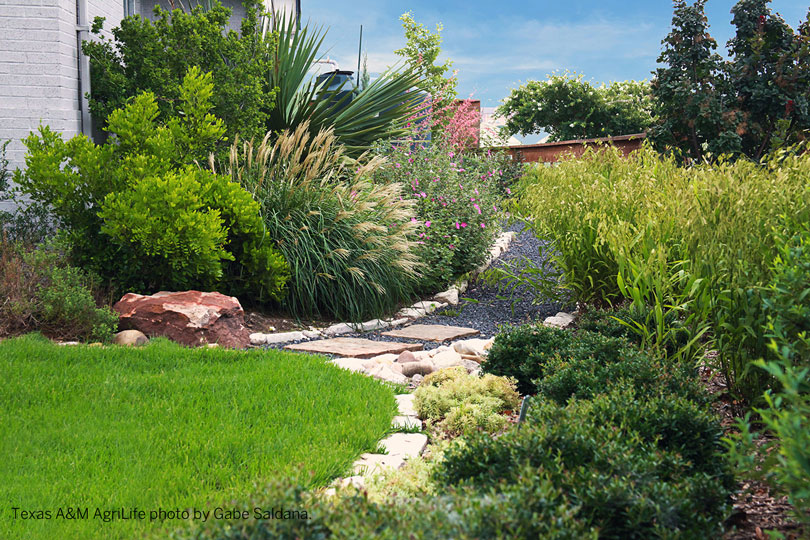By Justin Walker
Communications Specialist
Widespread drought conditions impact the Lone Star State, but a Texas A&M AgriLife Research environmental horticulturist says more water can be found through conservation.
Daniel Cunningham, the horticulturist working with AgriLife’s Urban Water program, Water University, said it is possible to gather additional rainfall for both indoor and outdoor use. Cunningham referenced Amarillo as an example, where the city receives twice as much water from rainfall as the residents’ demand.
“Can we capture all that water? Certainly not,” he said. “But it’s something to think about. If we are getting twice as much as we need, it does make you wonder how much more you can capture on your property to use as an alternative water source.”
Through Water University, Cunningham works to have people change their behavior in regard to water conservation by turning faucet and irrigation controls off, especially in times of insufficient rainfall conditions.
“There are certain parts of Texas where we are blessed with good rainfall, but then there are other parts like West Texas and the Panhandle that don’t see as much rainfall,” he said. “It’s not if, but when, we will see a drought. If we can make conservation efforts now and convince our family and friends to do so, maybe we can avoid some of the potential problems.”
The water supply in Texas is currently sitting around 15.2 million acre feet, but Cunningham said that number is expected to drop to 13.6 million acre feet. At the same time, population levels in the state are expected to skyrocket from 29.5 million to 51 million.
“It is imperative we look at conservation as a source of more water,” he said. “One of the best ways to achieve conservation is through education and outreach.”
Cunningham suggested rainwater harvesting barrels or cisterns for homeowners, while businesses could look to capture as much water as possible to filter for drinking water or to use in bathrooms.
“But a cistern only holds so much, so at some point the water is going to overflow,” he said. “We can actually hold more water in a landscape itself than we could ever capture in tanks. Landscapes designed to shunt the water off as quickly as possible don’t make sense. Landscapes that have rain gardens or depressions to slow down the water and allow them to fill up first before they overflow down the storm drains are much better.”
Cunningham outlined landscaping aspects homeowners should use in order to decrease the need for water. They include rainwater harvesting or greywater harvesting, native or adapted plants, pervious paving, edible landscaping, rain gardens, drip/efficient irrigation and reduced lawn area.
“Build landscapes as resilient as possible to drought, and we will be better off when those droughts do come,” Cunningham said.
Some other tips he offered includes:
– Create healthy vibrant water-efficient landscapes without sacrificing aesthetics.
– Water only when needed.
– Water deeply to promote deep and healthy roots. Frequent watering does not encourage deep root growth.
– Water slowly for better absorption. Use drip wherever possible and the “cycle and soak” method.
– Maintain 2-4 inches of mulch in flower, groundcover, garden and shrub areas to hold the water for a longer period of time.
– Design for efficiency.
– Install irrigation systems for efficient use per state and local specifications.
– Water without creating runoff. “The concrete is growing fast enough already. It doesn’t need to be watered.”
– Check irrigation systems monthly and make repairs and adjustments when needed.
For more information, including tips and ideas for landscaping conservation, visit https://Wateruniversity.tamu.edu.

